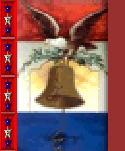 |
||||
 |
||||
| |||||||||||||
|
Portrait of the Artist as a Young Man I
agree with Norman N. Holland, “We can never know the novel except through some
human mode of perceiving it.” (Kershner 279)
In reading many of the critical essays on Joyce’s works it becomes
obvious that he was able to touch a multitude of experiences for a variety of
readers. Most critics agree,
“When he came to write A Portrait of the Artist as a Young Man, Joyce
relied heavily on autobiography;...the novel follows his own life from birth up
to the age of twenty.” (Kershner 6)
Joyce needed to be able to speak to this diverse array of readers so that
he could, as Brivic commented, “...re-form human consciousness by bring a new
awareness of the mind through self-exploration.” (Kershner 266)
Joyce
did not write this novel in the tradition of Plato or Coleridge.
This was not “art for the sake of art.”
Instead, in the tradition of Aristotle, he moralized, he preached what he
believed to be truth. Joyce
followed Wordsworth’s purpose, which was to “to choose incidents and
situations from common life, and to related or describe them, throughout, as far
as was possible in a selection of language really used by men....”
(Instructor’s notes 6) I
believe that in order for Joyce to justify the path he took for his life it was
necessary for him to create a character that would speak for himself in the
novel. The reader is forced to come
to conclusions and make decisions based on Stephen’s frame of mind.
This is a characteristic of the novel that Holland did not appreciate.
“[Joyce] tries to use words to control others. That is another reason I find this book so hard to like.
Joyce controls me so, or tries to.” (Kershner 289)
He needs to manipulate the reader in order to make him or her see
Stephen’s growth through rejection of religion and other social hindrances. Joyce
uses the selective omniscience approach to his novel.
Only by this method can Stephen’s thoughts be expressed in such a way
that the reader would believe the thoughts were really his and not a projection
or assumption of the narrator. Many
critics of his work believe it to be a comment on the struggles of his youth and
the breaking away from those things that hindered his artistic growth. “A Portrait of the Artist as a Young Man has many
symbols, but the fundamental one is of a creature trying to escape from the
bondage of the grosser elements, earth and water, and learning painfully how to
fly.” (Burgess 50) Elements,
that if he did not break loose from, would prevent his artistic soul to prevail.
What Joyce wishes us to see in this novel then is the development of the
man through those struggles, and his resultant ability to accomplish artistic
expression. In
the very first pages of the novel Joyce sets up the parameters in which this
struggle will be fought. It will be
with sex, both as gender and as passion, politics, family, and most of all
religion, or the struggle between good versus bad.
Throughout the first chapter we see Stephen respond to many “not [so]
nice expression[s].” He recalls
his mother “told him not to speak with the with the rough boys in college.
Nice mother!” (Kershner 21) What Joyce wishes us to see is a very
innocent young boy who takes unusual note of every word or phrase that seems
nasty or vulgar. A boy who wants to
get away from the coarseness of the school, and back to what he perceives to be
the civility of his home. He even
rationalizes to himself that he can learn all he needs to know from those with
whom he lives at home. “Father
Arnall knew more than Dante because he was a priest but both his father and
uncle Charles said that Dante was a clever woman and a wellread woman.” (Kershner
23) Everything
in Stephen’s first months at school was cold and strange, and for the first
time we see him relate the cold and damp to things white; when normally white is
associated with purity. “He
wondered whether the scullion’s apron was damp too or whether all white things
were cold and damp.” (Kershner 24)
Home once again, for Christmas, Stephen is very aware of his warm
surroundings. But it is during this
visit that Stephen himself becomes aware of other, less pious influences on his
life. His father speaks “cooly”
of the language of the Holy Ghost as a “very bad language,” (Kershner 40)
and later on comments with some contempt, “We are...[a] priestridden God
forsaken race.” (Kershner 45) And in the midst of this, when Stephen saw tears
in his father’s eyes, his innocense is given its first major blow. Joyce
jumps immediately from the “terror stricken” Stephen who was reacting to his
father’s tears, to the school yard once again where he now seems somewhat more
comfortable than before the Christmas break.
And thus the novel takes us step-by-step through the growth of Stephen as
he faces the issues that tend to hold him back from his artistic formation.
Joyce tries to show the loss of innocense as a necessary path in the
development of the artist. And
so Joyce sets up the idea of the novel in these first few paragraphs where
he gives us a hint of the turmoil Stephen will go through with father,
church, women, politics and religion. Although
he tries to convince us that he has rejected his religious background, and that
on moral grounds, his very evident knowledge of the Word tells us that he knew
it was more that a moral rejection. Throughout,
Stephen, and Joyce, cannot entirely escape from his religious background.
He wants to believe there is no hell, but fears there is.
As Holland comments, Stephen “may have hedged his bets.” (Kershner
283) When convicted of his sins Stephen “does not confess at the school, but
at a church and to a priest where he is not known.
Stephen repents but does not seek the fullest punishment or shame he
could inflict on himself.” (Kershner 283) And
yet, even as Stephen repents of his sin we can see Joyce try to make something
of a mockery of the repentant sinner, while at the same time hinting at
Stephen’s growing skepticism of religion and the need to fear God.
After the preacher gave the final sermon in chapter three Stephen goes to
his room where, as he enters, he is overwhelmed by fear and prays that “death
might not touch his brow as he passes over the threshold.” (Kershner 123) It
is here that Joyce lets us know that Stephen will soon reject these feelings.
Here he also gives us a hint that Stephen is beginning to think the whole
idea of religion is senseless. “He
told himself calmly that those words had absolutely no sense which had seemed to
rise murmurously from the dark.” (Kershner 123)
Stephen then goes to his bed where he kneels, implying a prayerful
attitude. But Joyce continues to
mock the scene and even adds a touch of the “cold and damp” so that Stephen
will begin to see even this pure act as lifeless. “He could not weep.” (Kershner
124) So,
with an ironic touch, Joyce uses what appears to be Stephens confession of guilt
and return to God, there is really no turning back for Stephen after this point.
His apparent spiritual restoration does nothing more than eventually
convince him that religion is repressing his artistic growth. In
the end Stephen admits that his final decision, to pursue art rather than God,
may be the wrong one, but he is not afraid to make a mistake, even a great
mistake, a lifelong mistake and perhaps as long as eternity too.” (Kershner
213) In a sense he is still hedging
his bet, but he no longer cares. He
now feels he has escaped the need to fear others, to fear lack of relationships,
or to fear God. He has made
himself. So
again we come back to Brivic’s comment, “he aims to re-form human
consciousness by bringing a new awareness of the mind through self-exploration.
He succeeds to the extent that Portrait...vividly establishes the idea
that every person is entitled to define his or her self apart from Church,
state, and family.” (Kershner 266) Stephen
has not only made himself, but sees himself as the savior of all who wish to
free themselves. He hears the
voices calling to him, “We are your kinsmen.
And the air is thick with their company as they call to me, their
kinsman, making ready to go, shaking the wings of their exultant and terrible
youth.” (Kershner 218) Stephen
felt that religion and politics of the time were holding back his race.
“[R]ace was a particularly vexed question in late nineteenth-century
Ireland, where indigenous racial myths collided with political realities.” (Kershner
379) Also, “...the social structure of Ireland at the time virtually
guaranteed that claims to true social distinction were reserved for members of
Protestant...rather than Catholic families like the Dedaluses (or the Joyces,
for that matter).” (Kershner 379) “Stephen
hopes to be his races savior...,” (Kershner 383) and feels he can do so by
raising their consciousness. They
too, he believes, can realize their potential by shedding themselves of all the
social hindrances that “...incestuously [breeds them] backwards along the
evolutionary path. Works
Cited Burgess, Anthony.
Re Joyce. New York: W. W. Norton & Company, 1965. Kershner,
R. B., ed. A Portrait of
the Artist as a Young Man. By
James Joyce. 1964. Boston:
Bedford Books of St. Martin’s Press. 1993. |

|